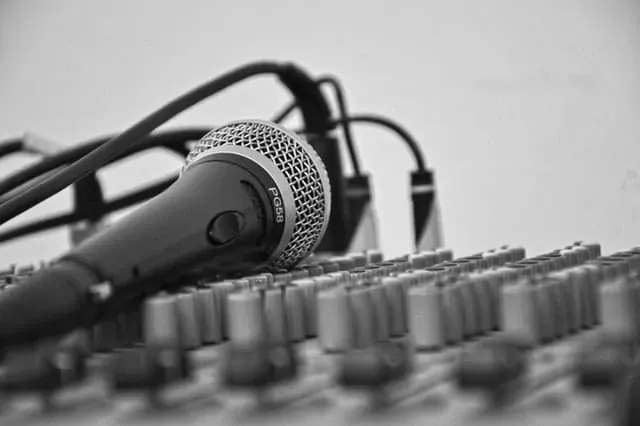How to Produce Music Without a Computer

Producing music is much easier than it used to be. You can now produce, record and mix music at home due to the technology available. The usual way to produce music is by using a computer with certain software packages, but can you produce music without a computer?
How do I produce music without a computer? Producing music without a computer is called a dawless setup. It requires you to use analog synthesizers, drum machines, microphones and other instruments that are hooked up to a mixer with a sound recorder. Using this setup allows you to produce and record music without using traditional computers.
Many producers prefer this setup because they often find computers confusing or complicated and find that this type of setup suits their workflow.
In this article we will be exploring the different options you can use to produce music without a computer.
How do I produce music without a computer?
Producing music without a computer is much easier than it used to be due to the evolution of different technologies. Electronic musicians often rely on producing music without a computer.
Making music without a digital audio workstation is good for music producers who want to do things differently and explore new ways of creating music. The best way to do this is by using analog synthesizers, drum machines or any other gadget/instrument of your preference.
Many years ago, hip hop artists wouldn't use a computer to make beats. They would use a device called a drum machine. A drum machine is a device that has built-in sounds that the user can use to record and create beats. The sounds are often split up into different parts of a drum kit. For example, a snare, hi hat, bass, toms ect. The machine will have a timeline and different channels so that the user can record multiple sounds.
The first product you are going to need is a mixer. A mixer allows you to connect all your synthesizers, microphones, pedals, studio monitors and drum machines so that you can adjust and set the volume levels of the sounds. This can then be outputted into a sound recorder. Using this setup can completely replace your computer and your digital audio workstation.
This video below shows a great example of a dawless setup. A little bit confusing but it demonstrates how you can put together a kit to produce music with a computer.
Ed Sheeran Performing Live
Ed Sheeran performs and produces music by using a loop pedal that he operates by using his feet. This is a great example of how to make music without a computer.
What Is a Dawless Setup?
A dawless setup is producing/making music without a digital audio workstation. DAWs or digital audio workstations are the software music creators usually use to produce, record and mix their music.
Software such as Pro Tools, Logic Pro x, Abelton, and Garageband are all digital audio workstations that can be used to produce/make music.
Why Should I Go Dawless?
Computers can be frustrating and confusing. Sometimes you might not want to spend additional time in front of your computer.
Many electronic music producers use dawless setups because it suits their preferences and style of producing music.
There are many reasons why you should go dawless, and sometimes it can be personal to the individual.
Our advice would be to try going dawless and see how it affects your workflow.
The majority of modern day producers will use a digital audio workstation as it allows them to easily record and make their music with extra plugins, loops, sounds and easy mixing options.
How do I build a set up without a computer?
Let’s make an example of what a set up without a computer could look like. It all depends on the instruments you use, what sounds you want to experiment with and what gear is in your budget.
First of all, you will need stereo studio monitors (Speakers that have a flat EQ, so that you can produce a mix your music) to hear what you are creating and to listen to your mix. If you would rather use headphones there is a lot of mixing headphones out there that will let you listen to your mix with great quality too.
Although you can use headphones, we do not recommend it. Most headphones will have additional bass and other effects that change how you hear the EQ. Studio monitors have a flatlined EQ, which means you hear the sound without any additional effects.
You may also need a microphone and a microphone stand depending if you're going to record your vocals or instruments.
Dynamic and condenser microphones are the most popular… and Ribbon microphones are coming back in style. With all these different names of microphones, it can be confused to know which microphone does what.
For your first home recording microphone, we would recommend you buy a large diaphragm condenser microphone if you’re planning to record vocals and a Dynamic microphone if you are planning to record vocals.
Dynamic microphones can handle higher SPL (Sound Pressure Levels) before the sound distorts, which makes it ideal for instruments.
Condenser microphones don’t typically handle higher SPL as well as dynamic microphones but are very good at picking up quieter, lower sounds very clearly. Which is why it makes it perfect for your first vocal microphone.
Most modern electronic musicians will require a drum machine or if you prefer to play rhythms yourself, a drum pad. Also, all the necessary cables to plug everything in correctly and any other device of your preference in order to make chords, melodies, and beats.
You may also need synthesizers. This is completely up to you. Lots of synthesizers can get expensive, so it depends on how many you can afford and how many you want to use.
It’s important to mention that if you use speaker monitors they should be placed strategically so you can properly hear your mix in stereo. Try to make a triangle between your ears and the place your left and right speakers are located.
How does this gear look like? List of gear and recommendations
Below we have given product recommendations, but we would advise you to do your own research. Each person is going to need different equipment and products due to the different styles of music and your production needs.
Cables
You will need enough TRS cables to plug all of your devices into the mixer. This depends on how many devices you are using and how many channels of the mixer you are using. If you are using microphones you will need XLR cables and for MIDI devices you will need 5pin cables (midi cables).
Mixer
This depends on how many channels you need. Personally, I like the Allen and Heath Zed 18 (18 channels). You should use a mixer that has both XLR and TRS jacks, stereo and mono channels, USB connection, three-band EQ (Hig, Mid, and Low) and enough channels to support your set up.
Synthesizers
This could be an extensive topic; It depends on your taste. I would recommend purchasing something that you could make chords and melodies with or any synth that has an interesting bank of sounds and knobs that help you modify any sound to your preference.
This could be EQ, Attack, wave type (sine, triangle, square, sawtooth) or any other knob that can help you achieve your aesthetic preference.
Good quality synths are expensive but, you can find the Roland Boutique, the Korg Minilogue, The Teenage Engineering Pocket Operator’s, The Moog Werkstatt and the Arturia Microbrute for less than 500 USD.
Monitors
You’ll need good speakers to hear your music in good quality. I use the Yamaha H8s. Good monitors with professional quality under 200 USD are the M-Audio Studiophile AV40 Active Studio Monitor Speakers and the JBL LSR305. If you want to get something more professional with better fidelity in the low frequencies then you should look into the Yamaha Hs5 (around 400 USD).
Mixing headphones
In case you don’t want to use big monitor speakers, you’ll require studio headphones to hear your music with high fidelity and a headphone adapter to plug them into your mixer. For under 50 USD you can get the Sennheiser HD202 II, the Sony MDR-7506 or the Samson SR850.
Drum Machines or Drum Pads
To make beats or even real sounding drums your best option is to plug these into your mixer because they work as hardware instruments and have a bank of sounds. For Drum machines, you can get the Korg Volca Sample and for drum pads, you can get the 4 pad Alesis Sample Pad both for 155 USD each.
Vocal Microphone
There are a lot of good microphones for recording vocals. The Rode NT1-A is an excellent vocal condenser microphone. For recording instruments we would recommend you look into a ribbon or a dynamic microphone.
FX for vocals
There are some cool live FX boxes, I use the TC Helicon “voice live touch 2” to add reverb, delay, harmonies or any other FX to make my vocals sound more interesting and also to loop any recording, which can be super useful in this Setup. Also, you could plug a midi keyboard or guitar to it and trigger any vocal harmony you want from the instrument. I recommend everything from TC Helicon. They have pedals starting at 150 and going up to 800 USD.
Pop Filter
In case you need it for recording vocals with better quality and eliminate the “Pops” when you sing using the letter “P” or “T”. Some microphones have protection included. The Nady MPF-6is only 12 USD and is a best seller on Amazon.
USB cable
You’ll need this to connect the mixer to the portable recorder. You might need some USB to TRS or XLR cables, depending on what your set up needs.
Portable recorder
This recorder should have USB input to record directly from the mixer eliminating the need for a computer. I recommend the Zoom H4n pro that has excellent quality when recording audio. The Zoom H4n Pro is around 199 USD (Latest models) but you can find older models for around 100 USD.
Our Advice
My advice would be to first decide what music you're trying to construct. You may only need a synthesizer that has the ability to record music, but it will depend on what you're trying to achieve.
If you're looking to just create beats then all you'll need is a drum machine.
The Roland TR-808 is a well-known drum machine that was used by many artists back in the 1980s. Roland has now produced a modern version of the TR-808 called Roland TR08 Drum Machine (Link to Amazon), this would be ideal for anybody who's looking to create beats without a computer.


